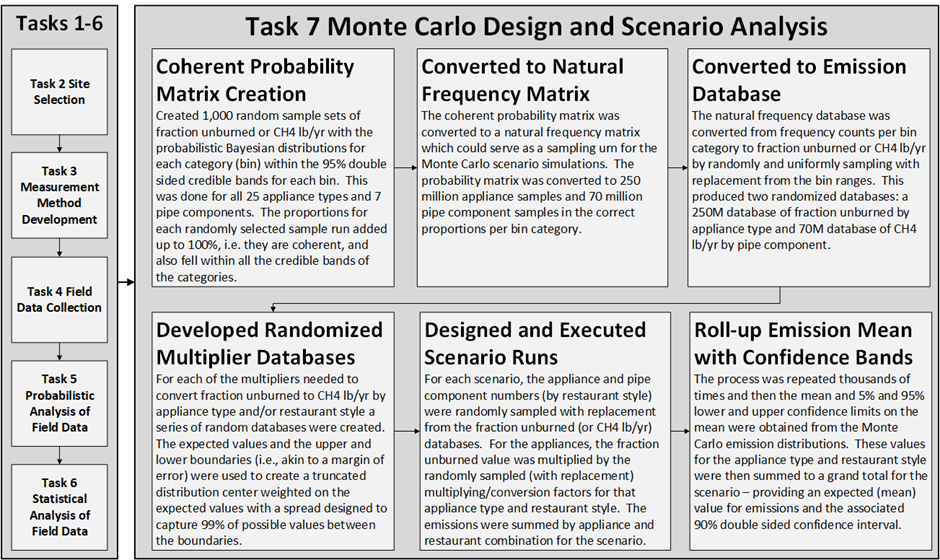Assessment of Fugitive Emissions from the Natural Gas System: Commercial Buildings
Beginning in 2015, GTI began measuring and quantifying methane emissions from commercial buildings in California, in support of the state’s commitment to reducing greenhouse gas emissions as mandated by California Assembly Bill 32. California has already initiated efforts to quantify emissions from various sources such as natural gas pipelines; however, it has been recognized that emissions from other sources such as commercial buildings are not well characterized.
This project developed and validated a field method to collect and quantify measurements of post-metering fugitive methane leaks/emissions from commercial foodservice and inpatient healthcare buildings in California. The field method measured post-metering methane leakage from specific appliances and piping system components, and combined them to estimate total building emissions. Field measurements were taken at 20 commercial foodservice establishments and two inpatient healthcare facilities across the state. This effort was a small-scale field measurement program with the goal of developing a methodology that could be applied to a larger program in the future.
The project team performed a probabilistic and statistical analysis of the field data to develop a Monte Carlo method to predict exhaust and fugitive emissions from appliances and pipe system components respectively. This method was used to create seven simulations of cities and regions of different sizes. A flow chart summary of the technical approach used to develop the framework is shown below.
Project Details
- Sponsor: California Energy Commission
- Project Lead: GTI
- Project Partners: Lawrence Berkeley National Laboratory (LBNL)
- Budget: About $600,000
- Term: About 4 years
Project Resources
The robust and detailed technical framework developed by GTI for this project provides a solid foundation for future work. The development of measurement methodologies, sampling equipment selection, field validation of sampling techniques, and probabilistic and statistical analyses for these two initial commercial building types was a critical start in this research topic. Using this developed framework, further data can be collected and analyzed in other commercial building types, such as office, school, retail, etc. These results can then be modified and used to create a variety of different scenarios to reflect specific geographic regions, regulatory changes, etc. This project’s technological and methodological advancements are important steps to being able to quantify the contribution of commercial gas infrastructure to the overall greenhouse gas emissions in California.
Learn More
Contact the energy experts today

